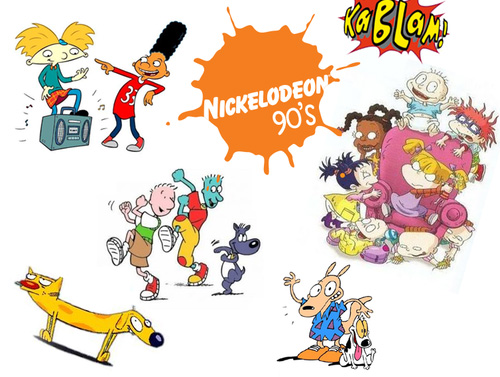Megann Horstead
Content Producer
It’s the end of an era. Saturday morning cartoons have fallen off the planet and with it, ’90s babies and their claims to having had a better childhood than today’s youth have been strengthened. But of course when comparing cartoons of ’90s babies to today’s youth, there is a lot of room for debate.
On the weekend of Sept. 25, the history of TV was altered when Saturday morning cartoons were laid to rest, according to cinemablend.com.
A majority of North Central’s students are ’90s babies and in learning about the death of Saturday morning cartoons, some cited grievances between cartoons of the 1990s versus today.
Third-year student Reilly Radomski noted why cartoons are not sticking with children as they did in years past.
“I think there was more value placed on cartoons growing up because kids didn’t have much else, today they have tablets, apps, games and the kids spend more on time on those than watching tv shows.”
In comparing ’90s versus today’s cartoons, Radomski said today’s cartoons don’t stack up well.
“Today’s cartoons seem to lack well thought out character and plots,” Radomski said. “It seems like older cartoons had so much more effort put into their development. Even watching them today give me a great appreciation for what the creators and team did to make them memorable.”
Speech communications professor Stephen Macek holds over 25 years of experience in media and noted why 1990s cartoons are so popular among youth of that generation.
“Part of the reason why kids from the ’90s have this fondness for all things animated has to do with the fact that there’s a lot more animated media being sold to them,” said Macek, “whether it’s cable companies or Disney investing in animated film.”
In turn, Macek attributed part of the hype surrounding ’90s cartoons to Netflix, YouTube and Hulu.
“It makes it so much easier at a push of a button for people to indulge in their enthusiasm for these cartoons,” said Macek.
He said YouTube in particular encourages people to indulge in their enthusiasm by having the option to create collections of one-liners and compiling scenes that hold their favorite characters as “digital tributes.”
“I think it’s just what we grew up with, so the cartoons and mentions of them bring us back to the good ol’ days,” said Maggie Frasier, fourth-year student. “I still even watch ‘Hey Arnold’ sometimes because it’s on Netflix.”
Anthropology professor Matthew Krystal noted how every generation gets a sense of nostalgia in viewing their childhood classics. He said things that are most familiar to us tend to stick with us.
The idea of holding nostalgia for things from our past is nothing new. Just as ’90s babies claim a sense of ownership for their cartoons, ’50s babies had rock ‘n roll and ’70s babies had disco.
Although it is debatable whether cartoons were better in the 90s versus today, Macek recognizes why ’90s babies find the cartoons they watched as children to be empowering.
“Disney’s formula is always to put the child at the center of the universe and tell the story from the point of view of a character who is a child and who is able to triumph in the adult world — Simba, Ren & Stimpy, etc.,” Macek said. “That’s because, of course, they know who they’re making stories for.”
In terms of content differences between ’90s and today’s cartoons, Macek pointed out how media advertising adds to the hype.
“I think there might be something about the kind of humor that was contained on those shows that is particularly appealing for certain age groups, but I think the biggest reason is (’90s babies) emerged as a target consumer market,” said Macek. “Media had to figure out a way to target ads at (them) and vehicles for those ads. All of those cartoons proved to be a really great way of targeting.”

